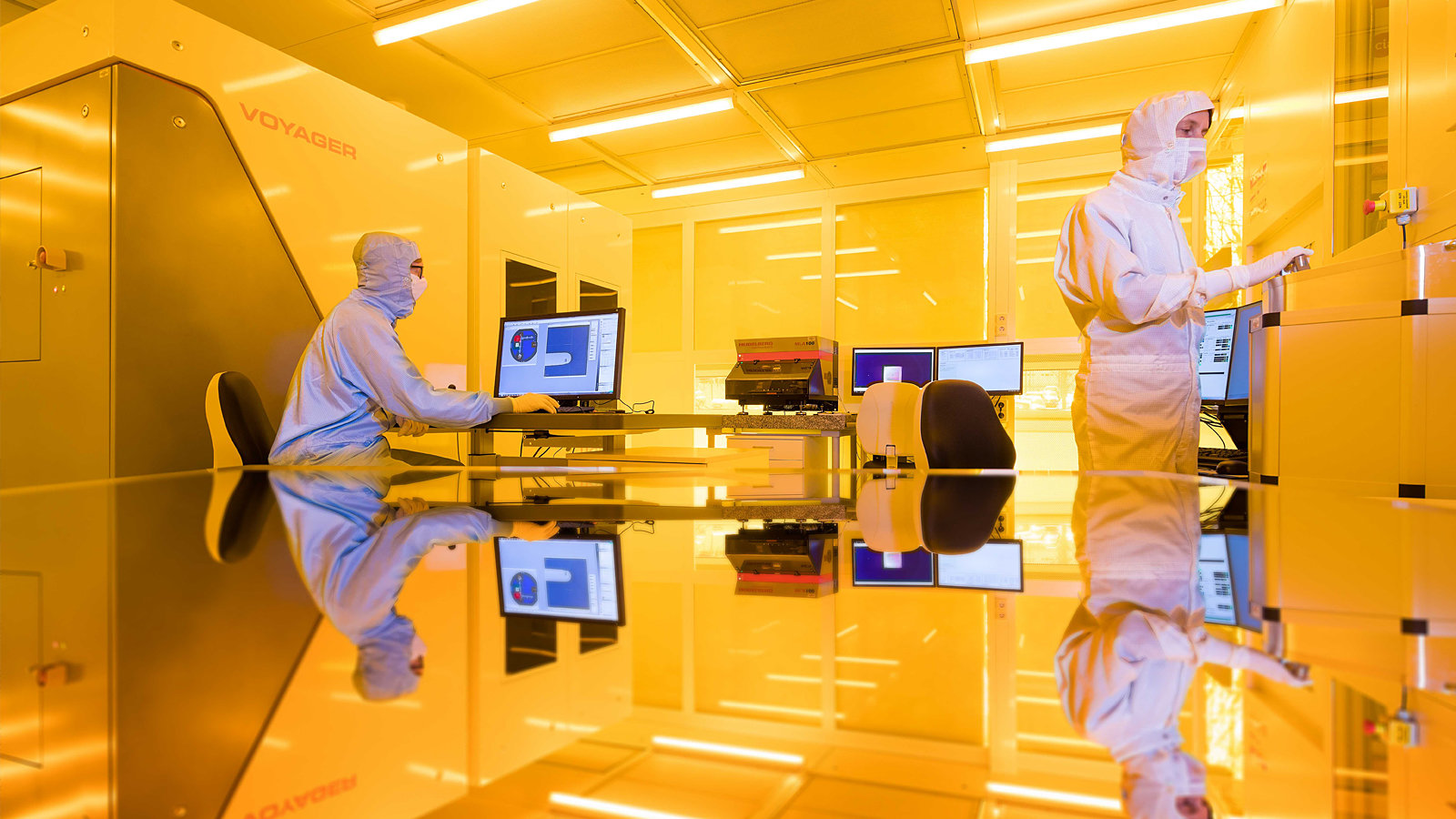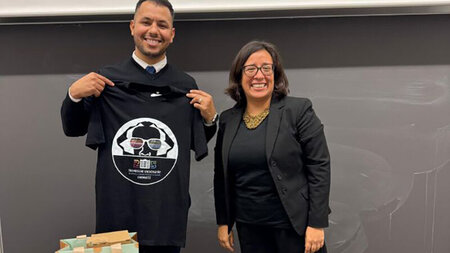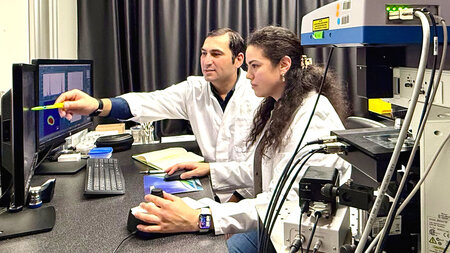“Magnetic Origami” for Microelectronics
Researchers from Dresden and Chemnitz report on a new method for producing highly potent three-dimensional microelectronics in the journal “Nature Communications”
-

Clean room for the production of thin films for microelectronics. Photo: Jürgen Lösel/IFW Dresden. -

Prof. Oliver G. Schmidt received the Gottfried Wilhelm Leibniz Prize, Germany’s most important research prize. Photo: DFG/David Ausserhofer
The development of high-performance three-dimensional microelectronics poses a huge challenge for scientists and engineers alike. New methods and breakthroughs are always sought after. One such method is, for example, the self-assembled roll-up of microelectronic nanomembranes, but this process is subject to strong statistical fluctuations. This in turn leads to variations in yield and reliability of so-called microscopic origami structures that do not meet the high demands of microelectronics. As a result, it is no surprise that an industrially applicable method that allows for reliable and cost-effective production of self-assembled three-dimensional components has not yet been established.
In the journal „Nature Communications”, Prof. Dr. Oliver G. Schmidt and his team are now proposing a new way to fold these nanomembranes into three-dimensional microelectronic components. Oliver G. Schmidt leads the Institute for Integrative Nanoscience at the Leibniz Institute for Solid State and Materials Research in Dresden. As a professor of Material Systems for Nanoelectronics at Chemnitz University of Technology, he has established the Centre for Materials, Architecture and Integration of Nanomembranes (MAIN). Prof. Dr. Schmidt is also a recipient of the Gottfried Wilhelm Leibniz Prize, the most important research prize in Germany.
“With this method, we have solved a major problem with the 3-D production of architectures out of microelectronic nanomembranes. The production can now be reliably performed via the magnetic origami method, and high-performance microelectronic components can be produced. The scaling up of the technology for mass production remains, however, a particular challenge”, says Prof. Dr. Schmidt.
The creation of high-performance 3-D micro energy storage elements
With this method, researchers use the simplest possible way of folding – namely, the roll-up of nanomembranes, which has been known and established for many years. The new idea in this method is the development of a magnetic remote control which can be used to programme and control the folding and assembly process via an externally applied magnetic field. For the first time, it is now possible to implement the three-dimensional arrangement of nanomembranes in a controlled, reproducible manner, on a length scale in the range of centimeters, thereby reaching a yield of more than 90 percent.
With this new method of magnetic origami structures, researchers have now created three-dimensional micro energy storage elements that are robust, lightweight and compact. These results demonstrate the potential of magnetic field-assisted roll-up of nanomembranes. The advantages of magnetic micro-origami are particularly evident when precisely aligned three-dimensional structures with many nanomembrane windings are required. This is the case, for example, with new types of microbatteries or with passive electronic components such as capacitors, inductors and transformers.
Background: Self-assembled folding and roll-up of microelectronic layer systems
Present-day microelectronics are based on components that are defined in two dimensions and built up layer by layer. For many microelectronic components such as microbatteries, coils and transformers, this method is not an optimal solution, mostly due to high cost of manufacturing and unreachable performance specifications. Therefore, completely new approaches are being sought after, so as to conquer the third dimension.
One such approach is the self-assembled roll-up of microelectronic layer systems. The layer systems are first defined in two dimensions using established techniques, and they then transform themselves into three-dimensional origami architectures. This so-called “self-assembly” is triggered, for example, by the reduction of tension in the layer systems. This means that the structures automatically snap together like a spring when they are released from their fixtures.
Multimedia: An animation illustrates the principle of magnetic winding for the production of highly potent three-dimensional microelectronics. The video is available on the Chemnitz University of Technology official YouTube channel.
Original publication: Felix Gabler, Dmitriy D. Karnaushenko, Daniil Karnaushenko, Oliver G. Schmidt; Magnetic origami creates high performance micro devices, nature communications 2019. DOI:10.1038/s41467-019-10947-x
For further information, contact Prof. Dr. Oliver G. Schmidt, Leibniz Institute for Solid State and Materials Research Dresden e.V. and Chemnitz University of Technology, Phone +49 (0) 351 4659-810, E-mail o.schmidt@ifw-dresden.de.
Mario Steinebach
08.07.2019




